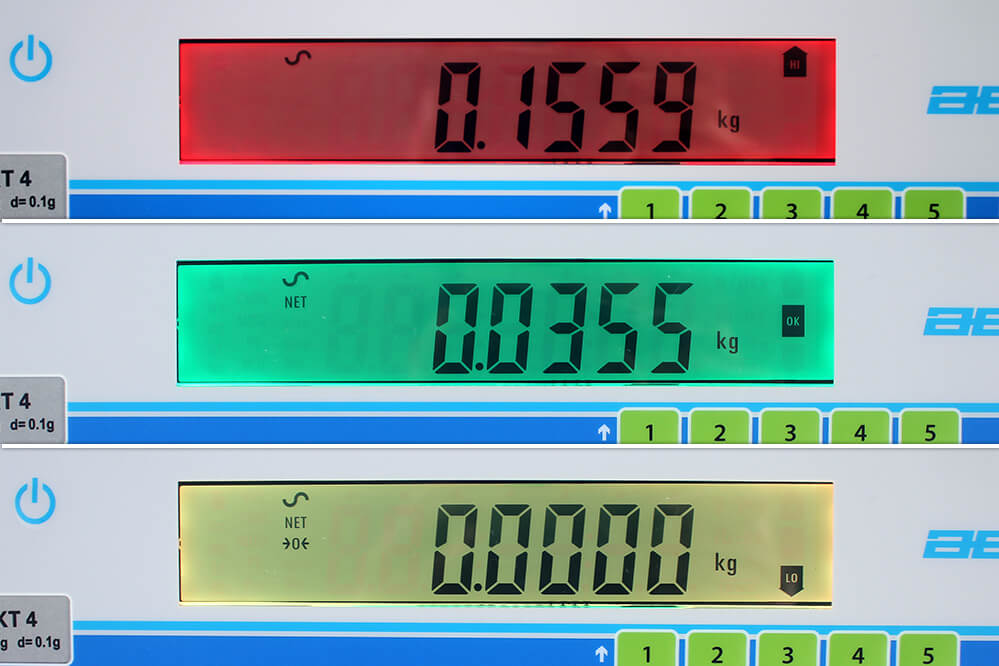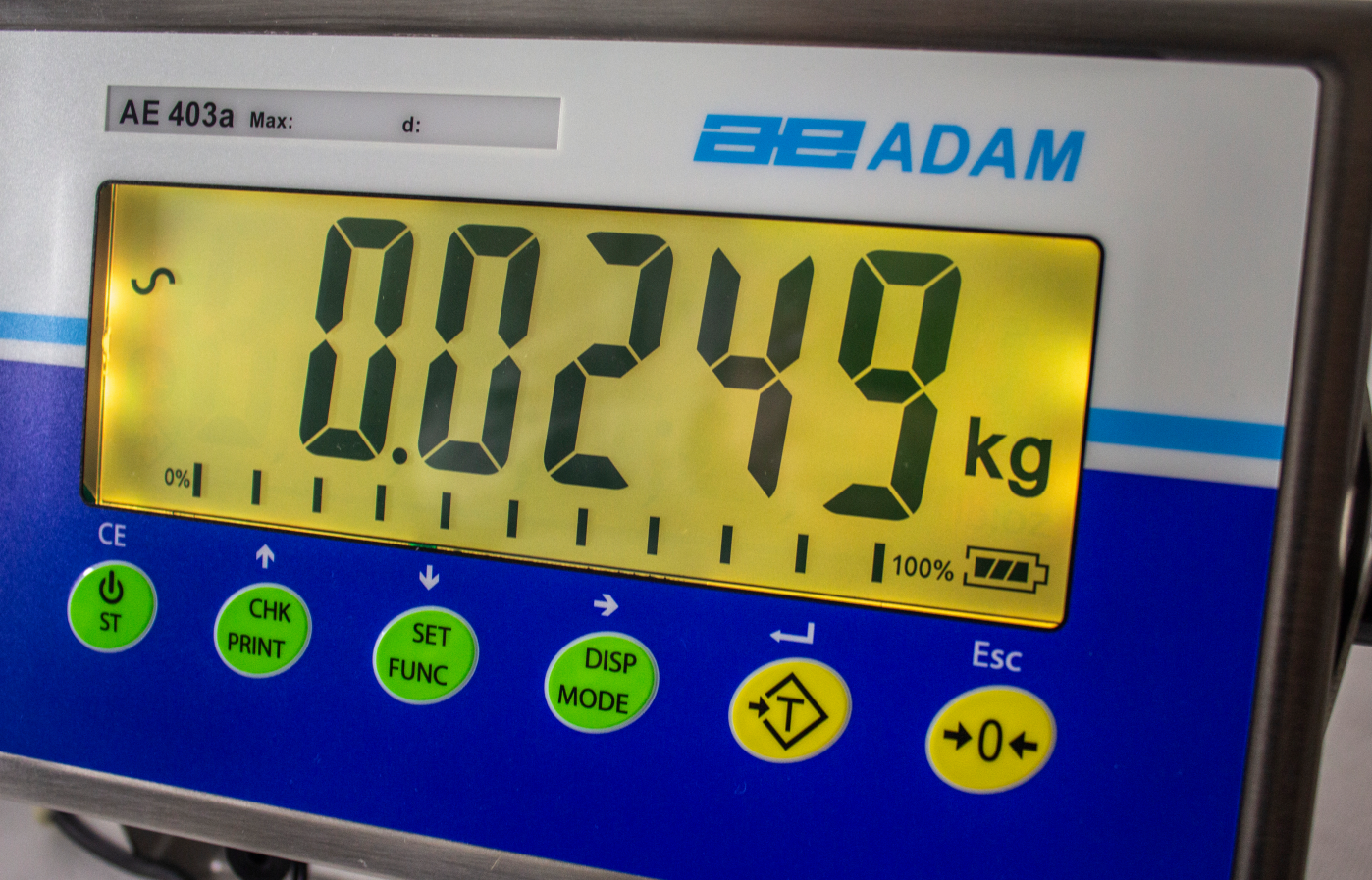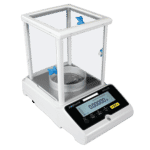
Many scales have a checkweighing function, it’s an extremely helpful tool when you know how to use it. This blog will describe what checkweighing is, the benefits of checkweighing scales, and some common applications for this exceptional feature.
What is Checkweighing?
Checkweighing is an extremely helpful weighing application. It’s used to help guarantee consistency when weighing many of the same item over time. However, consistency doesn’t always have to mean the exact same weight each time, especially when the nature of what you’re weighing makes that impossible. Checkweighing allows you to set an acceptable limit of variation. Instead of having to keep track of the margin of error yourself, you can program high and low weight parameters into your scale with the checkweighing function. Then, the scale will alert you when your sample is heavier than your upper limit, within range, or lighter than your lower limit. For even more versatility, you can decide to only set an upper or a lower limit, if one matters more than the other. To learn how to use a checkweighing scale, see our guide here.
Checkweighing can be found most frequently in bench and floor scales, though even our boast the option. In most scales, checkweighing is one function of many, so the system will be more pared down and ideal for occasional use. However, for those who use checkweighing on a day-to-day basis, there are checkweighing scales like our or available.
Benefits of Checkweighing Scales
The choice between a regular scale and a dedicated checkweighing scale depends on your specific needs, but here are just two of the many benefits of checkweighing scales.
Convenience

Checkweighing scales are different than scales that offer a checkweighing function because the scale is designed specifically to make checkweighing tasks easier. Other functions such as accumulation or parts counting are usually still available, but they’re less obvious. For example, our have small LEDs on the side of the display that light up red, green, or yellow if the sample is above, within, or below your preset limits, as well as an audible alarm. This is perfect for short checkweighing stints, but when you’re checkweighing all day, the CKT and GFK’s large, colour-changing display provides extra convenient, at-a-glance results.

The CKT and GFK also offer full numeric keypads, with buttons dedicated to setting your high and low limits. This means that they’re quick and easy to customise, whereas a non-checkweighing scale may have fewer buttons and require a bit more manoeuvring, costing precious time.
Enhanced Productivity
This convenience will have the trickle-down effect of enhancing overall productivity. Especially when the goal is to sort items by their approximate weight, it can be a pain to pay strict attention to each individual result, and it chews up time. A colour-changing display makes this process more intuitive, since your scale pays attention for you. You don’t need to read the numbers or do any mental calculations to know that yellow equals below your limit.
Common Applications for Checkweighing and Checkweighing Scales
Food Production
Whether it’s a professional kitchen or a bakery, consistency is key. When you’re making products in bulk, 1000 pies, for example, you want to make sure that they’re all within acceptable limits. When filling each pie, checkweighing scales are helpful to make sure you’re adding not too much, and not too little. Having to make each pie exactly the same weight is very time consuming, though given the stakes, your limits might be rather narrow. Customers could become upset if their pie is stingy on the filling!

Manufacturing
Checkweighing scales can be helpful tools in any factory or warehouse, such as for shipping and receiving. One way checkweighing can help in all three is by helping keep track of inventory and stock. If, for example, you have a large box or container filled with a number of small products, weighing it every now and then with a checkweighing scale can help you recognise when it’s time to restock without counting manually. Simply set a lower limit and weigh. Once your stock weighs less than your lower limit, you know it’s time to purchase more. Parts counting is helpful in this regard as well.
Similarly, when the item you’re weighing is a barrel full of liquid like oil or gasoline, checkweighing allows you to keep track of when your supply is running low. For this purpose, a platform scale with an is best. Because barrels can get quite heavy, a platform scale with a larger capacity is likely necessary. The AE 403 is an IP68 rated indicator with a checkweighing function, so in the event of any spills, there’s no risk of harm.

When it comes to factories, every step needs to go smoothly. Checkweighing scales help that happen, as an item that doesn’t fall within parameters can immediately be removed from the line and prevented from moving on. This helps cut down on errors and improves efficiency.
Agriculture and Farming
Checkweighing scales are excellent for the agriculture and farming industries, as they can be used for both animals as well as those tasty fruits and vegetables.
When it comes to animals and animal husbandry, checkweighing can be helpful for monitoring their growth and overall health over time. For example, let’s say the average weight for a Brahma chicken is around 10.75 lbs. It’s perfectly healthy and safe for them to get up to around 12lbs, or as low as 9lbs, so when you’re monitoring your flock’s health, these will likely be your upper and lower checkweighing limits.
This gives insight as to how you can best take care of them and maintain or improve their health. Heavier chickens may be eating too much, whereas skinny chickens may not be eating enough, or have other underlying health issues. In this case, the best checkweighing scale would be the , as its base is stainless steel (and so easier to clean) and the indicator is set on a pillar for easy viewing.

Checkweighing is useful in the produce department particularly when packing up fruits and vegetables in their designated containers. Strawberries aren’t all identical in weight, but they’re often packaged that way. When packing a typical clamshell container of strawberries, you may decide that each container must have at least two and a quarter pounds of strawberries, but no more than two and a half pounds. As you’re packing, you can keep a close eye on the colour of the display, so you know whether you can add that last large berry or if it’s better to save it for the next container.
Once you know about the wonders of checkweighing scales, it’s easy to want one for your repertoire. Unsure about which of our checkweighing scales is right for you? Contact us for help.





